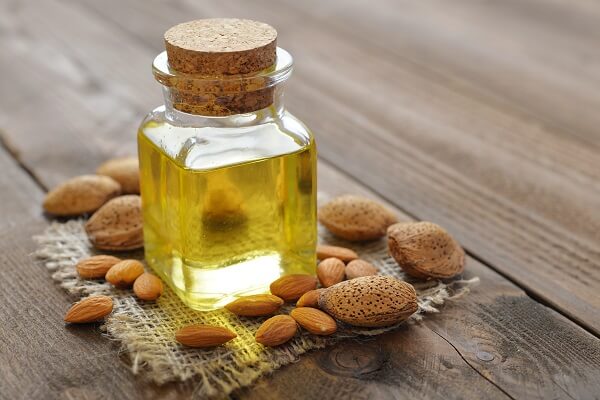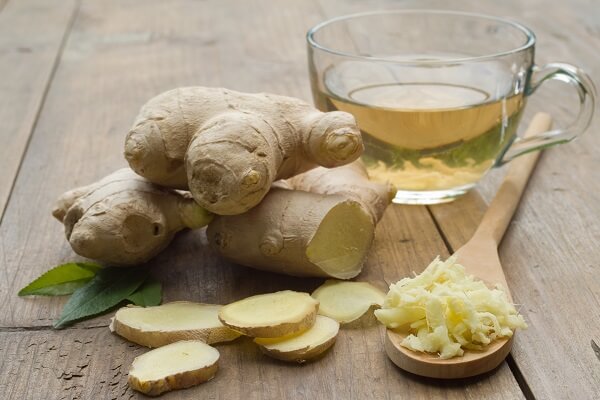How To Make An Herbal Medicine Chest is courtesy of http://www.totalsurvival.net/


 When you or a member of your family gets a runny nose, a sore throat, aching muscles, a minor burn, or a scraped knee, do you reach for popular over-the-counter medications?
When you or a member of your family gets a runny nose, a sore throat, aching muscles, a minor burn, or a scraped knee, do you reach for popular over-the-counter medications?
You’re not alone. Most people have a medicine cabinet filled with conventional store-bought remedies such as Benadryl, Tylenol, Advil, Robitussin, and Neosporin or their generic equivalents.
Want to save this post for later? Click Here to Pin It on Pinterest!
Disclaimer: I am not a medical doctor and nothing in this article should be taken as medical advice. Please talk to your doctor before using any of the herbs and/or remedies mentioned in this article.
You can take care of many common ailments effectively, inexpensively – and most importantly, naturally – by stocking the ingredients in an herbal medicine chest. Many herbs and oils can be combined to create healing salves, poultices, and other remedies.
You can grow herbs in your summer garden and on your windowsill year-round. Another option is to dry your summer bounty for use throughout the seasons. What’s rewarding is that the more you get accustomed to using herbs, the more ways you will find to use them. Plus, they taste great in your meals and as juices and teas.
If you are new to natural home treatments, here is a list of basic ingredients to get you started.
Essential Herbs
Basil
Although it is perhaps best known as a mainstay for Italian chefs, basil has impressive antibacterial and anti-inflammatory properties that can be used treat a headache, soothe the stomach, calm a cough, or take the pain out of an insect bite. Here is a video showing how to make a basil salve.
Chamomile
Best known in tea form, chamomile can treat an upset stomach, including nausea and vomiting. Chamomile can promote relaxation and sleep. Here is how to make your own chamomile tea.
Echinacea
Whether you use it as a tincture or a tea, echinacea can work magic on cold and flu symptoms. Here is how to make an echinacea tincture.






Elderberry
Elderberry syrup can help boost your immunity when a cold is coming on, and it helps increase bronchial secretions when you are congested. Plus, it tastes great, which helps when offering it to children. This article has step-by-step instructions for making elderberry syrup.
Lavender
Lavender oil has antiseptic and anti-inflammatory properties that can help heal minor burns and insect bites. It also can help ease anxiety and insomnia. Here is a video showing how to distill lavender oil.
Lemon Balm
Lemon balm, which is part of the mint family, can help treat anxiety, sleeplessness, indigestion, and minor wounds. You can make a simple lemon balm tea by steeping one-fourth to one teaspoon of dried lemon balm in hot water. This video shows how to make a lemon balm tincture.
Oregano
This tasty herb has antiseptic and antifungal properties, and it can be used to treat menstrual cramps, respiratory tract, and urinary tract disorders. Applied topically in a salve, oregano may help heal skin conditions, including acne and dandruff. Here is how to make your own oregano oil.
Parsley
Parsley is so much more than just a decoration on a restaurant dinner plate. Parsley is a natural detox remedy, diuretic, antiseptic, and anti-inflammatory agent. This video shows how to make parsley tea and explains some of its health benefits.
Rosemary
Fragrant and tasty rosemary has antibacterial properties and can help fight stress, ease headaches, and boost memory. This video shows some of the many ways you can use rosemary for health benefits.
Sage
Sage, which is an easy-to-grow perennial plant, can help ease anxiety, digestive problems, bloating, diarrhea and heartburn. This article offers a recipe for healthy sage infused water.
Thyme
Thyme is a Mediterranean herb that can help treat diarrhea, stomachache, sore throat, and arthritis. Here is a recipe for thyme tea using either fresh or dried thyme.
Carrier Oils
You’ll notice that you will need carrier oils for many herbal recipes.
Beeswax will come in handy for making healing salves and oils.
Also, having olive oil and coconut oil on hand is a good idea for the beginning herbalist. Other good options are Jojoba oil, avocado oil, and almond oil. Almond oil is excellent for the skin.
Here is a simple recipe for making almond oil at home.
Ingredients
- 2 cups unroasted almonds
- 2 to 3 TB extra-virgin olive oil
- Mixer or blender
Directions
- Using the mixer or blender, grind the almonds. Start on a low speed and gradually increase the speed as the pieces get smaller. The resulting paste will stick to the sides of the blender, so you may need to stop to wipe it off the sides as you go.
- Continue to grind until the paste becomes creamy in texture.
- Add olive oil in small increments and continue mixing in the blender.
- Remove mixture from blender and store the mixture in an air-tight container in a dry place for two weeks.
- After two weeks, open the container. The oil should have separated from the cream. Place the oil in a sieve to separate out any loose almond parts.
- Store the oil in an air-tight bottle.



Healthy Foods
Food is medicine, so some items you probably already have at home are great for healing recipes.
Garlic
Garlic is a natural antibiotic that can help boost the immune system to fight colds and flu. Its compounds help reduce blood pressure, lower cholesterol and promote brain health. That’s why it’s probably the best plant a survivalist can grow.
Here is a recipe for a healing garlic soup.
Ingredients
- 40 garlic cloves, peeled
- 1/4 cup olive oil, divided
- 1 medium onion, chopped
- 1 medium potato, peeled and chopped
- 4 cups organic chicken broth
- 1/2 tsp dried thyme
- Salt and pepper to taste
- 1 TB lemon juice
Directions
- Place two TB of olive oil in a large saucepan.
- Preheat oven to 350 degrees F.
- Place 30 garlic cloves in a small oven-proof casserole dish along with the remaining oil.
- Cover with foil and roast the garlic until soft and brown (about 35 minutes).
- Meanwhile, coarsely chop remaining garlic and add to the saucepan with onions and potatoes.
- Cook the garlic and onion mixture over medium heat until vegetables soften and begin to brown (about five minutes).
- Add the broth, thyme, salt, and pepper and bring it to a boil.
- Reduce heat to a simmer and cook until the potatoes are tender (about 15 minutes).
- Let soup cool to room temperature.
- Once the garlic has roasted, remove it from the oil with a spoon and place in a saucepan. (Reserve garlic oil for another use.)
- Puree the soup in several batches until it is thick and smooth.
- Return soup to the saucepan. Then reheat it and stir in lemon juice.
- Serve soup topped with a garnish of your choice.
Ginger
Often called ginger root, ginger can aid digestion, ease nausea, and help fight flu and cold symptoms. You may use ginger fresh, dried, powdered, or as an oil.
Here is a recipe for soothing ginger tea.
Ingredients
- 2 TB ginger root (about 2 inches or more of fresh, raw ginger root)
- 1 1/2 to 2 cups water
- 1 to 2 TB honey (or agave nectar)
- 1 TB fresh lime juice (optional)
Directions
- Peel and thinly slice the ginger.
- Boil the ginger in water for at least 10 minutes. For stronger tea, boil for 20 minutes or more.
- Remove ginger from the heat and then add lime juice and honey to taste.
- Sip your tea slowly.



Tip: Leftover ginger root freezes well for later use.
Building your own herbal cabinet can be done in stages. Don’t feel as if you have to get everything all at once. Take the time to experiment with different recipes that work for your family.
The benefits of having herbal remedies on hand include saving time and money on purchasing supplies from the pharmacy, boosting your natural immunities, and peace of mind knowing you are not exposing yourself or your family to unwanted harsh chemicals.
Here are some resources on herbal remedies that you might find helpful:
• Richters is an online retailer that sells quality herbal plants in small and large quantities.
• Mountain Valley Growers is another online retailer. Their website is a great resource for learning about growing conditions and care of your plants.
• Check out Strictly Medicinal Seeds for herbs, oils, and other healing plants and seeds for your garden.
• iHerb, an online retailer that offers herbal supplements and other herbal products.
• Amazon has a wide variety of herbal supplements.
• The Herbal Kitchen: 50 Easy-to-Find Herbs and Over 250 Recipes to Bring Lasting Health to You and Your Family by Kami McBride.
Here are a few book resources for the beginning herbalist:
• Do-It-Yourself Herbal Medicine: Home-Crafted Remedies for Health and Beauty by Sonoma Press.
• The Healing Power of Herbs: Medicinal Herbs for Common Ailments by Tina Sams.
• The Herbal Apothecary: 100 Medicinal Herbs and How to Use Them by JJ Pursell.
Finally, it is important that you choose your plants and seeds with care for health and purity. As with anything you consume, it is a good idea to check with a qualified herbalist or your healthcare practitioner for guidance.
Like this post? Don’t forget to Pin It on Pinterest!
This article first appeared on urbansurvivalsite.com See it hereSource Here: How To Make An Herbal Medicine Chest
No comments:
Post a Comment